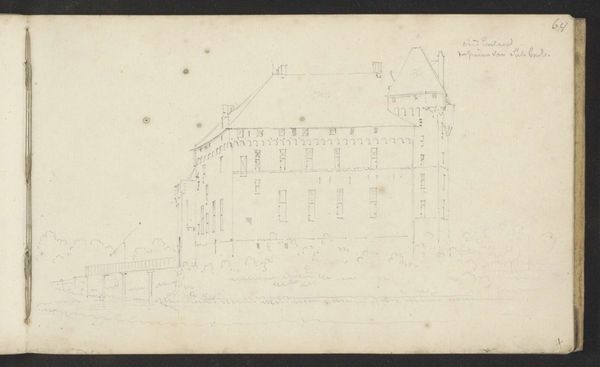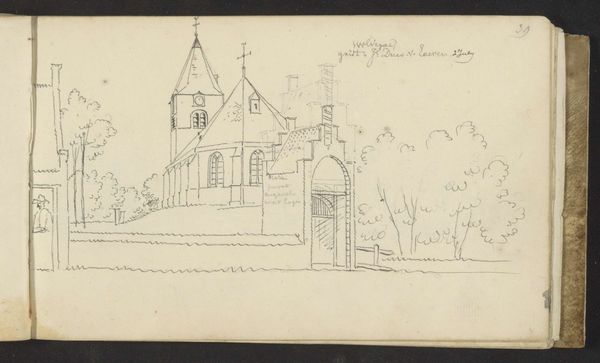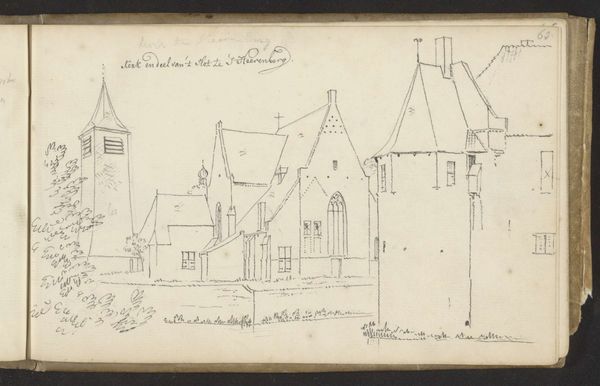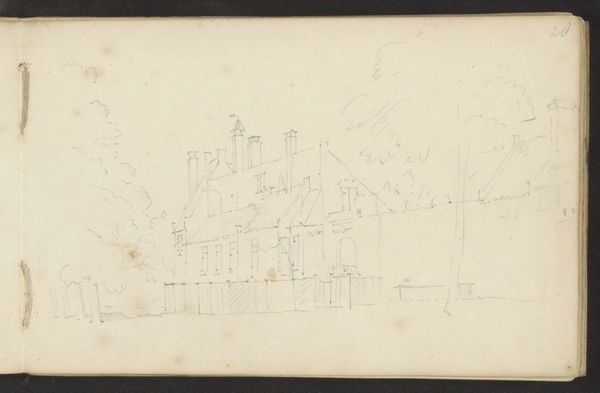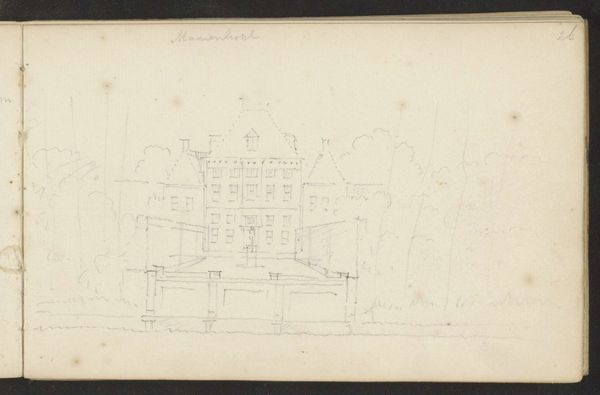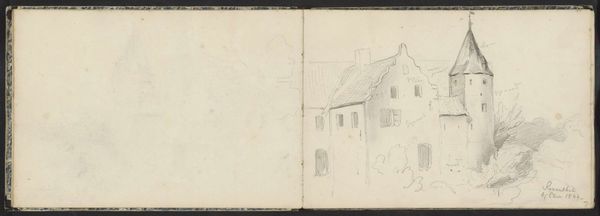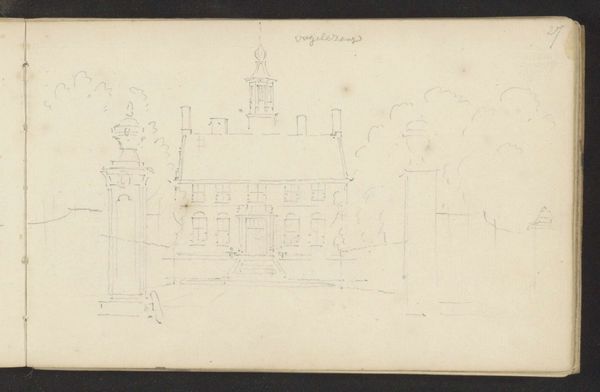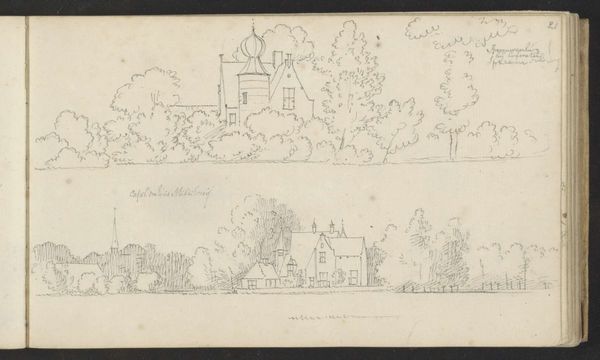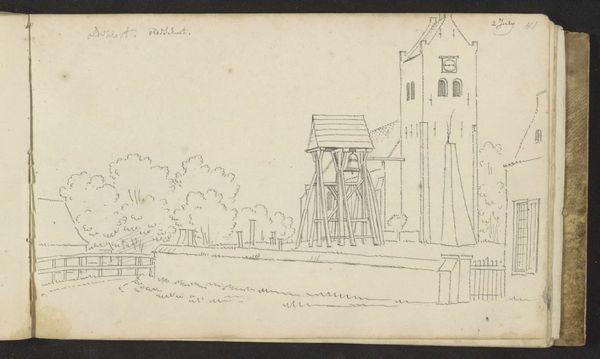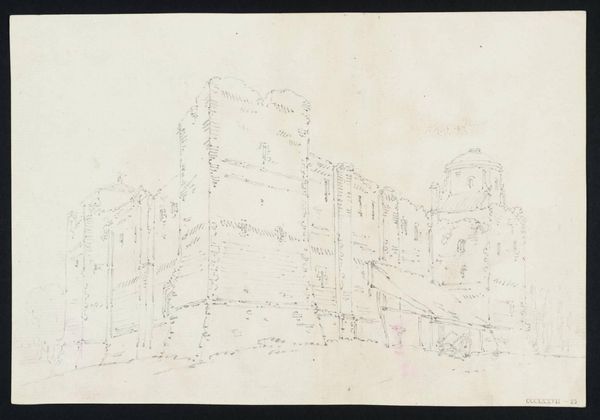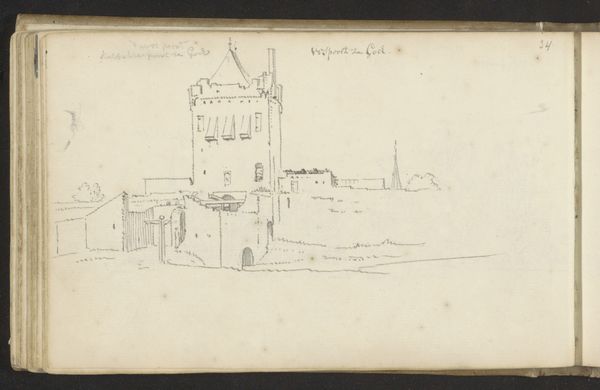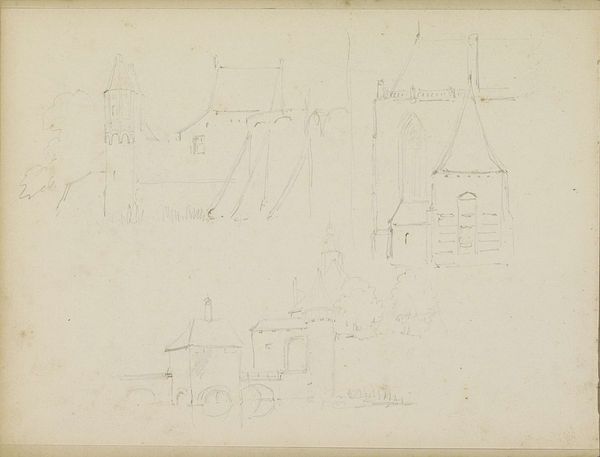
drawing, paper, ink
#
drawing
#
quirky sketch
#
sketch book
#
hand drawn type
#
landscape
#
paper
#
personal sketchbook
#
ink
#
sketchwork
#
geometric
#
pen-ink sketch
#
line
#
pen work
#
sketchbook drawing
#
cityscape
#
storyboard and sketchbook work
#
academic-art
#
sketchbook art
#
realism
Copyright: Rijks Museum: Open Domain
Editor: Here we have Cornelis Pronk’s "Kasteel Heeswijk," a drawing in ink on paper from the early 18th century, housed in the Rijksmuseum. It strikes me as very architectural, almost like a technical drawing. What do you see in this piece, looking at its composition and form? Curator: The precision of line is immediately apparent. Pronk delineates the architectural forms of the castle with remarkable clarity. Consider how the artist uses line weight, a consistent thinness, to create a sense of depth. It flattens the image, focusing our attention on the geometry of the buildings rather than atmospheric perspective. What effect does that have on your experience? Editor: It makes the structure the main focus, but it also feels a bit detached. Almost like looking at a blueprint rather than a realistic representation. It is interesting, though, how the emptiness around it enhances this quality. Curator: Precisely. The negative space is crucial. It isolates the structure, allowing us to analyze its components. Note the contrasting shapes - the angular rooftops versus the rounded turret. This interplay is what generates visual interest, a subtle tension within a seemingly objective rendering. Is there an underlying principle the artist may want to address with this juxtaposition of elements? Editor: Now that you mention it, maybe the artist wants us to consider the contrast between order and flow, like the castle against its more nature-infused surroundings. Curator: An insightful point. Through Pronk's calculated approach to line and form, a new depth is suggested, hinting that even an accurate rendering of place and form also represents its intangible counterpart, namely place. Editor: I see. It's fascinating how analyzing the simple lines and shapes reveals such a nuanced relationship. Thank you! Curator: Indeed. Studying art through form allows one to unveil deeper nuances.
Comments
No comments
Be the first to comment and join the conversation on the ultimate creative platform.
